 Sign In
Sign InThe #1 Free Email Subject Line Analyzer ®
Write Click-Worthy Email Subject Lines That Convert Leads


Get the FREE Headline Studio WordPress Plugin. Connect it now.
What Is An Email Subject Line Analyzer?
An email subject line analyzer is a tool designed to evaluate and provide feedback on the effectiveness of your email subject lines. These tools typically assess various elements of your subject line and provide suggestions to optimize them for better engagement and open rates.
Why Is A Good Email Subject Line Important?
A good email subject line is crucial for several reasons, as it significantly influences the success of your email marketing efforts. Here are some key reasons why a well-crafted email subject line is important:
- First Impression: The subject line is the first thing recipients see in their inbox. It forms the initial impression of your email and can determine whether the recipient opens, ignores, or deletes it.
- Open Rates: The primary purpose of a subject line is to entice recipients to open the email. A compelling and engaging subject line can increase open rates, leading to more people reacting to your message.
- Click-Through Rates: The subject line plays a role in setting the tone for the email content. If the subject line is intriguing or promises value, it can encourage recipients to not only open the email but also to click through your website or take other desired actions.
Tips For Writing Effective Email Subject Lines
When writing the perfect subject line, there’s a lot of helpful tips and guidelines to follow. Here are some good rules of thumb when it comes to writing effective email subject lines.
Be Clear And Concise
It’s best to keep your subject line short and to the point. Most people quickly scan their email inboxes, so clarity is essential.
Some examples of clear and concise email subject lines are:
- Upcoming Webinar: Mastering Productivity Tips for 2024
- Unwrap Savings: New Holiday Collection + Limited-Time Promotion
- We Miss You! Enjoy a Special Welcome Back Discount
Create A Sense Of Urgency
Make sure to incorporate words that create a sense of urgency or importance, such as “limited time,” “urgent,” or “action required.” This can encourage them to open the email to find the answer.
Some examples of urgency subject lines are:
- Action Required: Review and Approve Budget Proposal By [Deadline]
- Act Fast: Exclusive Offer Expires at Midnight Tonight
- Flash Sale Alert: 24 Hours Only – Don’t Miss Out
Ask A Question
Pose a question that piques curiosity or addresses a pain point your audience may have. Questions can engage readers and encourage them to open the email to find the answer.
Some examples of good email subject lines that ask a question are:
- What’s Your Favorite Product Feature? We Want to Know!
- Curious About Our New Collection? Which Style Catches Your Eye?
- Ready For A Change? How Can We Improve Your Experience?
Highlight Benefits
Clearly communicate the value or benefits the recipient will gain by opening the email. Focus on what’s in it for them.
Some examples of good email subject lines that highlight benefits are:
- Unlock Exclusive Savings Just For You! Your Personal Discount Inside!
- Discover Your Perfect Match: Tailored Recommendations Await!
- Upgrade Your Experience: Be the First to Enjoy Exciting New Features!
Avoid Spam Words And All-Caps
Steer clear of words and phrases commonly associated with spam. These include terms like “free,” “earn money” and excessive exclamation marks. Writing in all capital letters can come across as shouting and is generally considered unprofessional. Use capitalization sparingly.
Test and Analyze
You can A/B test different subject lines to see which ones perform better. Analyze the results and use the insights to refine your future email campaigns.
Keep It Short And Sweet
Writing short and sweet email subject lines is crucial for grabbing attention and encouraging recipients to open your emails. You never want your email to go on forever, and to have your main points be lost in a wordy subject line. Some examples of short & sweet subject lines are:
- Exclusive Offer Inside: Your 20% Discount!
- New Arrivals Alert: Discover Fresh Styles Now!
- Your Feedback Wanted: Quick Survey, Big Impact!
Personalize Your Subject Lines
Personalized email subject lines contribute to better customer engagement, increased open rates, and a more positive customer experience. By leveraging customer data and tailoring messages to individual preferences, brands can strengthen their relationships with customers and enhance the effectiveness of their outreach efforts.
Making your email subject lines personal will:
- Increase open rates
- Improve relevance
- Enhance customer engagement
- Build customer relationships
- Encourage customer feedback
Some great examples of personalized email subject lines are:
- Hi [Name], Unlock Your Exclusive Birthday Gift
- Tailored Just For You: Your Personalized Style Recommendations
- We Miss You, [Name]! Here’s A Special 15% Off Welcome Back
You can also use other data points such as past purchases, browsing history, or location to create subject lines that resonate with the specific recipient.
Use Action-Oriented Verbs
Action verbs prompt customers to take action. They create a sense of urgency, engagement, and clear direction, which motivates recipients to open the email and participate in the desired activity. Some effective examples of action verbs in subject lines are:
- Claim Your Exclusive Discount Today
- Explore Our New Collection – Shop Now!
- Reserve Your Spot For The Webinar Tomorrow!
Action-oriented verbs drive the recipient toward a specific behavior, whether it’s claiming a discount, exploring a new collection, or reserving a spot for an event. This approach enhances the effectiveness of the email subject line in prompting customer engagement.
How To Use An Email Subject Line Analyzer
Let’s go over how you can use an email subject line analyzer so you can maximize your email open rates.
Step 1: Write Out Email Subject Line Options
Come up with a few subject line options that encapsulate what you’re trying to get across in your email. They should be short, concise, and to the point. Highlight the most important part of your email in the subject line, so recipients know exactly what to expect.
Step 2: Analyze Your Subject Line With Email Subject Line Analyzer
Now that you have a few options ready, you can analyze them with CoSchedule’s Free Email Subject Line Analyzer. You can compare scores between your subject line options, and pick whatever one gets the best score.
Step 3: Optimize Your Subject Lines In Headline Studio
If you want a top-notch, highly appealing subject line, you can further optimize them in Headline Studio. You can optimize your subject line based on:
- Word Balance
- Reading Grade Level
- Sentiment
- Clarity
- Skimmability
And more! Analyze or generate an email subject line in Headline Studio to increase open rates, and convert leads.
How To Optimize Your Email Subject Lines For Better Open Rates
Aside from coming up with an appealing subject line, there’s other ways you can test and make sure your emails are landing well with customers. Let’s go over some little things that make a big difference when it comes to your email impressions.
A/B Testing
Test variations of your subject lines with A/B testing to understand what works best for your audience. This can include testing different wording, lengths, or approaches.
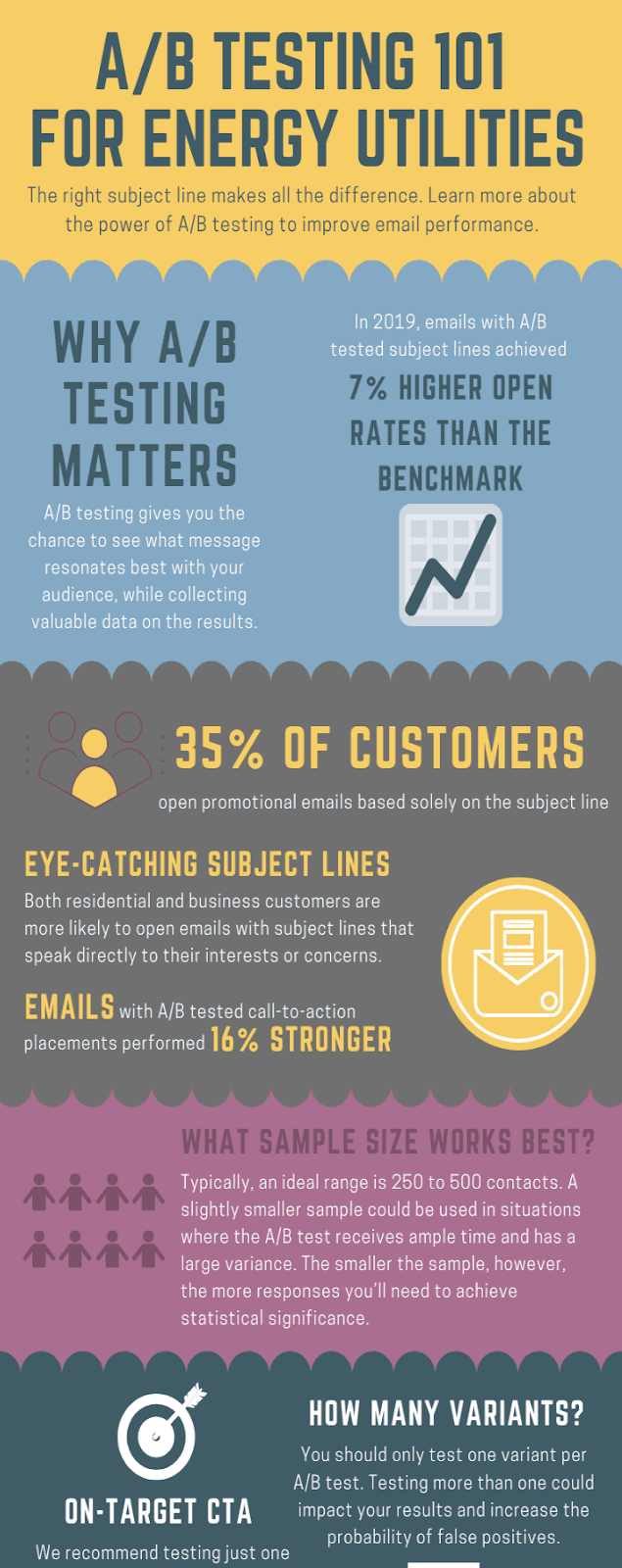
Use Social Proof
Incorporate social proof or testimonials in your subject lines when applicable. This can build trust and credibility, increasing the likelihood of the email being opened.
Optimize For Mobile
Consider the fact that many people check their emails on mobile and other smaller devices. Ensure your subject line is concise and still compelling on smaller screens, so it drives the same amount of traffic.
Popular Tools To Analyze Your Email Subject Lines
-
CoSchedule’s Headline Analyzer
Headline Analyzer is a free tool that lets you analyze your YouTube title, Blog title, Email title, Podcast title, TikTok, and Instagram captions. Simply select which category you’d like to analyze from the dropdown menu, and start analyzing your titles, headlines, and captions in an instant!
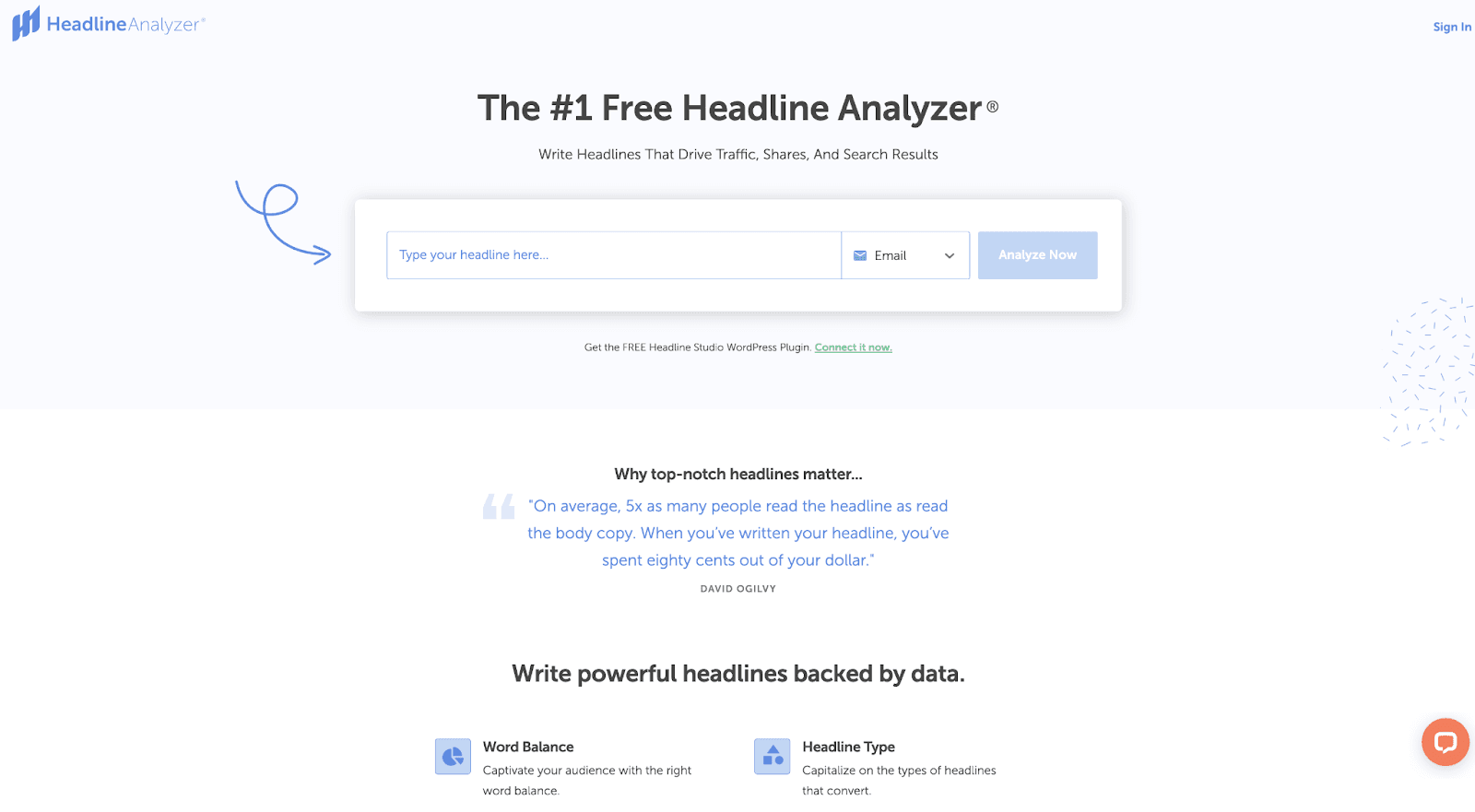
Now that you’ve analyzed your email subject line, you can optimize it further in Headline Studio. Optimizing your subject line will boost your open rates, and maximize traffic to your products.
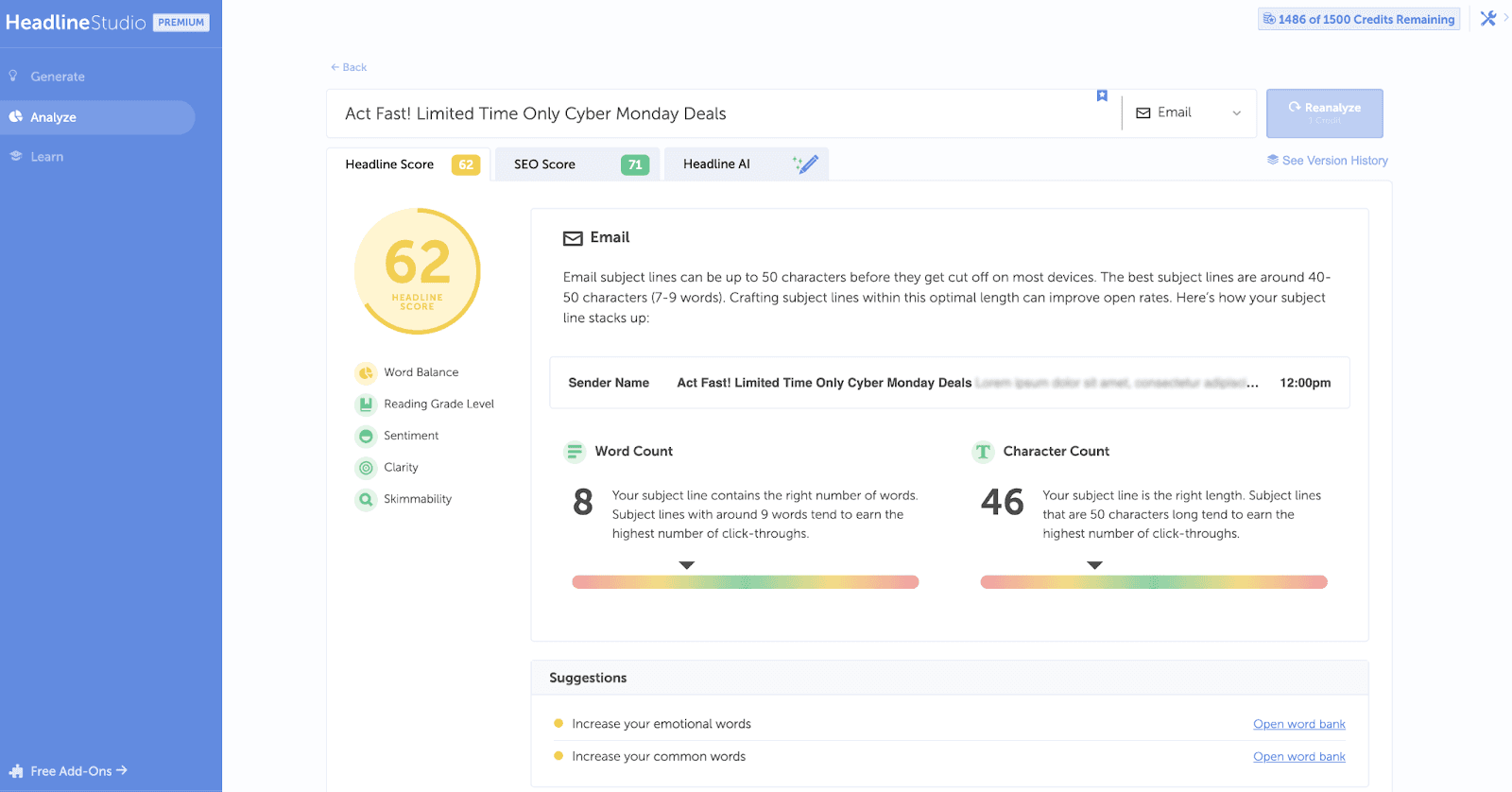
You can optimize your subject line based on Word Balance, Reading Grade Level, Sentiment, Clarity, Skimmability, and more!
Omnisend
Omnisend[a] is designed to help users analyze and improve their email subject lines before sending their next campaign. This tool is particularly useful for improving the open rates of email campaigns.
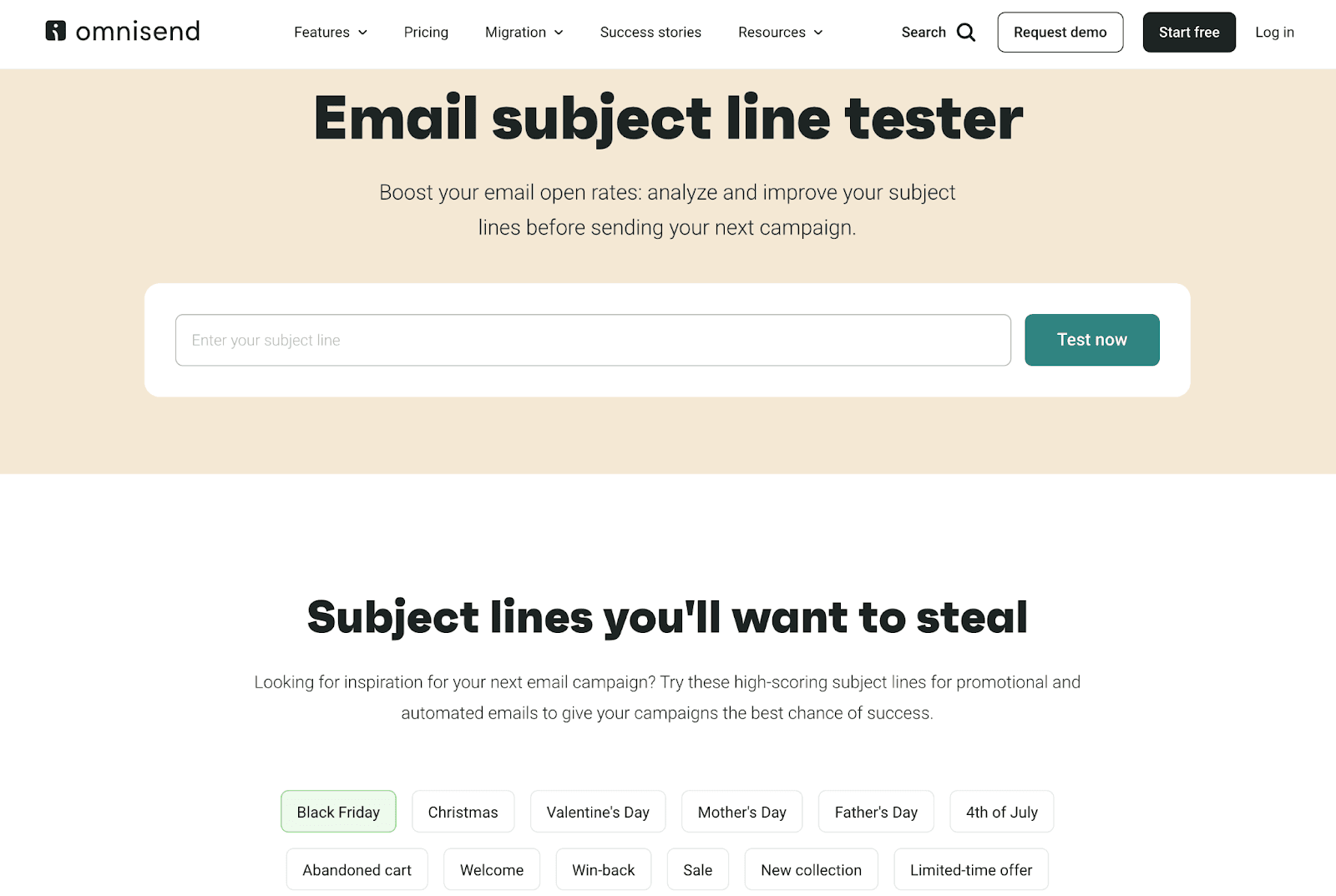
The tester also provides high-scoring subject lines for both promotional and automated emails to serve as inspiration for users.
Mailmeteor
Mailmeteor’s Email Subject Line Tester is a free tool designed to test the effectiveness of your email’s subject line and generate AI-powered alternatives. This tool aims to help users select the best subject line for their emails by assessing various factors such as length, number of words, and the presence of emojis or spam words.
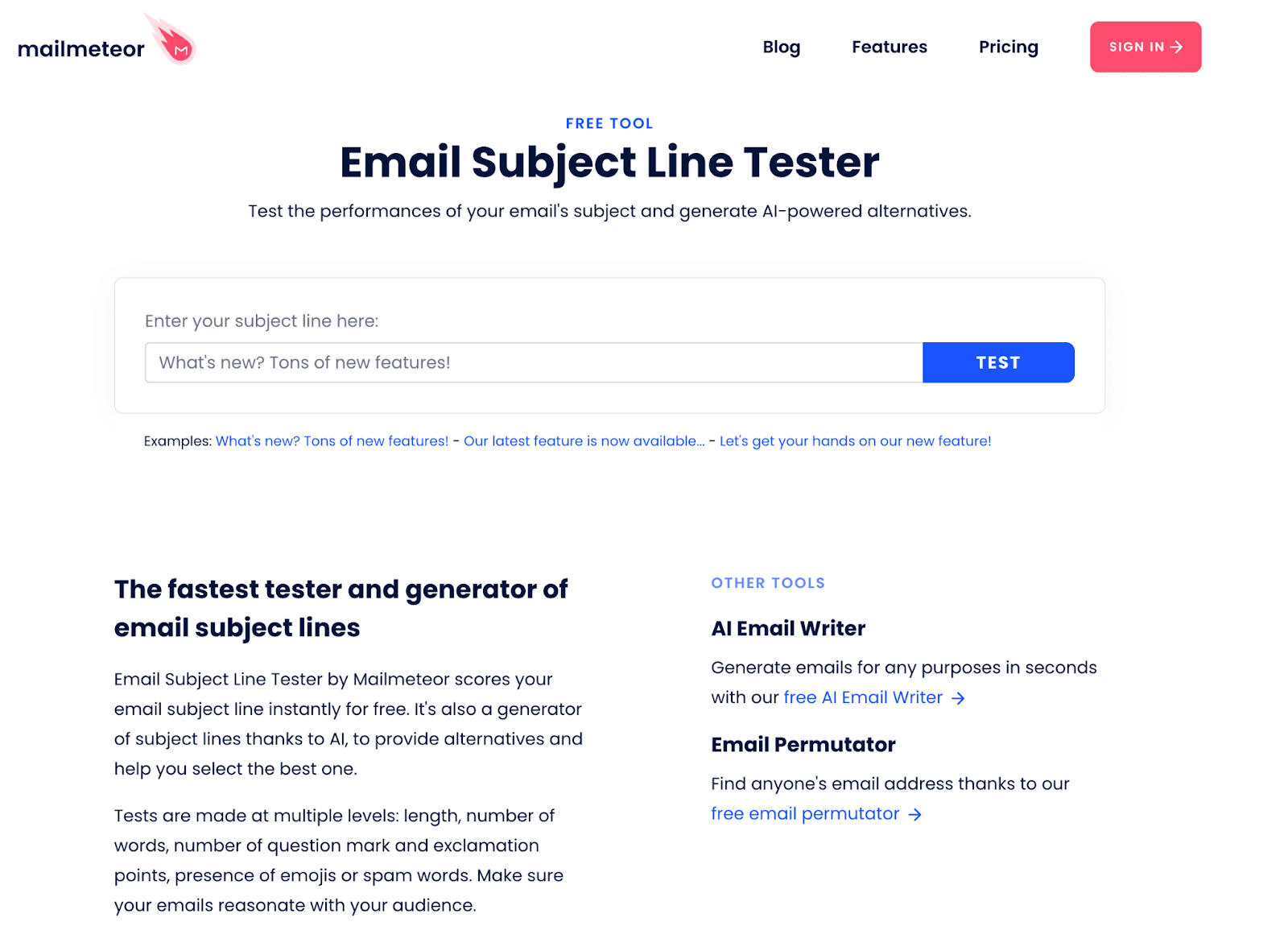
Mailmeteor offers features like email personalization, tracking, recipient segmentation, scheduling, automatic sending, attachment inclusion, and alias sending. Mailmeteor is trusted worldwide for its simplicity and privacy focus.
Frequently Asked Questions
How Do You Test Email Subject Lines?
There are many online tools available that can rate your subject line based on its effectiveness. You simply input your subject line, and analyzer tools will give you a score based on factors like length, use of action words, and whether you’ve used any spam trigger words.
How Do You Choose A Good Subject Line For An Email?
Here are some tips for choosing a good email subject line:
1. Keep it Short and Sweet: Email subject lines will get cut off if they’re too long, especially on mobile devices. Try to keep your subject line to around 50 characters or less.
2. Make it Relevant and Interesting: Your subject line should provide some insight into what your email contains. Make it interesting to pique the recipient’s curiosity and make them want to open the email.
3. Personalize When Possible: Personalized subject lines can stand out in an inbox full of generic emails. Consider using the recipient’s name or other personalized information.
4. Use Action-Oriented Verbs: Subject lines that begin with action verbs can be more enticing and can give a sense of urgency.
5. A/B Test Your Subject Lines: This involves sending out the same email with two different subject lines to different segments of your subscribers and seeing which one performs better.
6. Avoid Spammy Language: Certain words and phrases can trigger spam filters, which can prevent your email from reaching the recipient’s inbox. Remember, the most effective subject lines are the ones that resonate with your audience. It’s always beneficial to understand your audience and what they find valuable.
What Should You Avoid In The Subject Line Of An Email?
Here are some things you should avoid when crafting an email subject line:
1. Shouting: Using all capital letters can come across as yelling and is likely to turn off recipients. It’s good to be excited about your product or service don’t have to yell at your customers to get their attention.
2. Overusing Promotional Phrases: Phrases like “Buy now” or “Free” can often trigger spam filters. They might also annoy your audience if overused.
3. Making False Promises: Your subject line should accurately reflect the content of your email. Misleading your audience can damage your credibility and make people less likely to open your emails in the future.
4. Being Too Vague: Your subject line should give a clear indication of what your email is about. If it’s too vague, people might not be interested enough to open it. Remember, the goal is to make your subject line enticing and informative enough that your recipient wants to open your email. Avoiding these common pitfalls can help you achieve that.
What Does CC Mean In Email?
CC stands for Carbon Copy. When you add email addresses to the CC field in your email, you are sending those individuals a copy of the message for their information. This means they can see the email, but they are not primary recipients, and the email is not specifically addressed to them.
Explore More Headline Analyzers
Want to write even more engaging content? Explore additional content analyzers to perfect your blog titles, social media captions, email subject lines, and more.
- Headline Analyzer: Discover the power of the #1 headline analyzer. Write headlines that drive traffic, shares, and search results.
- Blog Title Analyzer: Craft click-worthy blog titles that captivate your audience.
- YouTube Title Analyzer: Write titles that reel in traffic, prompt clicks, and pique your viewer’s curiosity.
- TikTok Caption Analyzer: Write attention-grabbing captions that resonate with your audience, increase shares, and maximize reach.
- Instagram Caption Analyzer: Write captivating captions that boost engagement, enhance brand awareness, and drive results.
- Podcast Title Analyzer: Write captivating titles that grab attention, attract more listeners, and maximize your podcast’s impact.